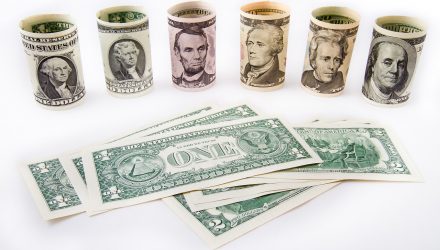Fixed income ETFs are adding assets at a remarkable rate this year. One of the fastest-growing members of that group is the WisdomTree Bloomberg Floating Rate Treasury Fund (NYSEArca: USFR).
Floating rate notes, like the name suggests, have a floating interest rate. Specifically, the notes’ have a so-called reset period with interest rates tied to a benchmark, such as the Fed funds, LIBOR, prime rate or U.S. Treasury bill rate. Due to their short reset periods, these floating rate funds have relatively low rate risk. On a percentage basis, USFR is the fastest-growing ETF in the U.S. this year.
“The fastest-growing ETF year-to-date coming from the fixed income space may catch some observers a bit off-guard, especially considering the fact the Federal Reserve (Fed) is tightening monetary policy and the U.S. Treasury (UST) 10-Year yield has risen by, at one point this year, almost 100 basis points,” said WisdomTree in a recent note.
Rate Hikes Compelling for Floating Rate Notes
USFR, which debuted in February 2014, follows the Bloomberg U.S. Treasury Floating Rate Bond Index. The fund’s holdings are priced at a spread over 3-month Treasury bills. Floating rate notes featured in USFR mature in 2019 and 2020. The ETF has nearly $71 million in assets under management.
The Fed’s current rate-hiking trajectory makes floating rate notes a potentially compelling bet for fixed income investors.
“While we could all debate where we think the 10-Year yield is headed from here, there appears to be one crucial point not really up for such conjecture: the Fed is expected to continue raising rates,” said WisdomTree. “Given the Fed’s guidance and market outlook for additional increases in the Federal Funds Rate in 2018, if not beyond, some “Fed protection” seems warranted.”
USFR has a 30-day SEC yield of 1.61%, which is better than what is found on many short-term cash investments. All of the fund’s holdings are rated AAA, so credit risk is not an issue. Floaters are designed to be low duration products as highlighted by USFR’s effective duration of just 0.02 years.
For more on the bond market, visit our fixed income channel.
The opinions and forecasts expressed herein are solely those of Tom Lydon, and may not actually come to pass. Information on this site should not be used or construed as an offer to sell, a solicitation of an offer to buy, or a recommendation for any product.

